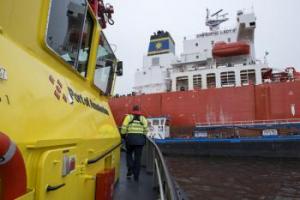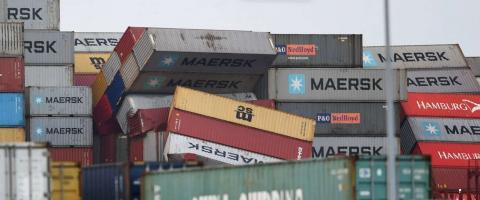Harbour Master
Harbour Masters
Worldwide there are approximately 3,000 merchant ports and the work of the Harbour Master can vary widely from country to country and from port to port even within the same country.



Lessons for Durban and Cape Town?
As climate changes, the frequency and severity of wind gusts hitting APM Terminals facilities around the world has increased significantly. APM Terminals has responded by developing advanced software, which uses Artificial Intelligence to accurately predict weather events and help terminals prepare as efficiently as possible.
In 2021, the software reduced container toppling incidents at its terminal in Tangier to zero.
With the potential to topple container stacks, wind gusts can cause serious damage to terminal equipment, containers and their contents. Falling containers are clearly a massive risk to safety and result in huge economic costs for both the terminal and its customers. Clearing-up is costly, complex and dangerous, and can cause significant supply chain delays.
It was far from the first time that APM Terminals MedPort Tangier had seen damage from heavy winds. But the severity of an event in 2020 convinced the terminal leadership team that more had to be done to protect both people and operations. Not just in Tangier, but across APM Terminals, where containers were being blown over with increasing frequency.
Ahmed El Amrani, HSSE Manager at APM Terminals MedPort Tangier commented: ‘As this is a global problem with both safety and customer impact, we clearly needed to find a better solution.
‘Until then, we had been moving up to 800 containers every time the forecast said to expect gales. A huge and costly effort with limited effect. The weather forecast was too unreliable, so we kept scrambling at the wrong times or taken by surprise. We needed better data to make the right moves at the right time.’
Safety through data
The terminal pulled in experts on meteorology, aerodynamics, integrated IT solutions, and experienced terminal operators to work the problem. Over a period of six months the taskforce developed and tested a highly advanced piece of software, which uses 18 on-site sensors to build a highly detailed wind forecast and predicts exactly which containers are at risk at any given time. It presents the data in a simple and intuitive dashboard.
Artificial Intelligence
The resulting Wind Resilience Tool is powered by a smart AI engine which provides much more accurate predictions of wind speed and direction at the terminal and automatically alerts users when pre-set wind speed criteria are forecast to be exceeded.
‘The tool pulls the weight, size and position of each container from the terminal operating system and builds a live 3D model of the yard, updated in real time with each container movement,’ explains Ahmed.
‘Machine learning or ‘artificial intelligence’ capabilities, also identifies when the actual weather does not match the forecast, and the system learns from this and improves the forecasting.’
Zero toppled containers
The system went live at the MedPort Tangier terminal in July 2021 and has already proven its worth. Not a single container has been toppled since, even though wind speeds have exceeded 25 m/s on several occasions. And the terminal now only needs to move about 20 containers for each wind warning, down from 800.
‘This is a fantastic example of how we are using data and technology to adapt to new challenges and manage serious risks. We know that climate change is increasing the frequency of severe weather events, making these falling containers an even bigger risk to our people and operations,’ said Tanuj Luthra, Head of Global Safety and Resilience.
‘This innovative tool, developed by our frontline experts, will enable us to manage and mitigate that risk much more effectively as we share it across all our landside container operations. It has the potential both to save lives and to boost our service reliability for customers. It doesn’t get much better than that.’
This item first appeared in Africa Ports & Ships (www.africaports.co.za ) on 5 September 2022 and appears here by kind permission of the Editor.
Picture captions
Tanger Med in northern Morocco, opposite the Strait of Gibraltar and Africa’s busiest container port.
Containers blown over in a storm.
The International Harbour Masters Association (IHMA) and the Port of Rotterdam Authority are pleased to announce the 15th International Harbour Masters Association Congress, to be held from 09–12 June 2026 at Theater Zuidplein in Rotterdam.
Naresh Sewnath, Senior Harbour Master at Transnet National Ports Authority (TNPA) in South Africa’s Port of Durban, began his maritime career back in 1988. He started out as a cadet with TNPA (then known as South African Transport Services (SATS).